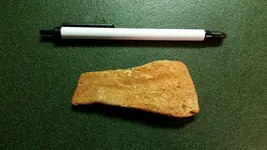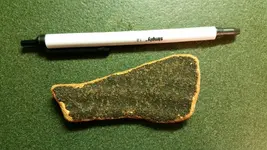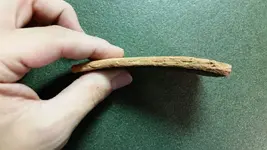Shady Digger
Sr. Member
- Joined
- Jun 21, 2007
- Messages
- 266
- Reaction score
- 90
- Golden Thread
- 0
- Location
- Cool Ridge, WV
- Detector(s) used
- Tesoro Silver uMax
- Primary Interest:
- Metal Detecting
I just got back from a week's vacation on Ocracoke Island on the Outer Banks of NC. On our last day there I stumbled upon what I believe to be an old pottery shard that had freshly washed ashore. It looks pretty old and worn and has definitely tumbled in the surf for some time. Sadly any glaze or markings on the outside have worn off, but there are still some ridges running the length of it. The curve is pretty slight, so it may have come from a large pot or bowl. I'm hoping someone here knows a lot more about pottery than I do and can tell me more about it. Knowing the history of the island and the OBX in general, I think it may be Native American or even Colonial, or possibly from one of the many shipwrecks that litter the coast. Next week I plan on contacting the local preservation society there on Ocracoke to see if they can shed some light or point me in the direction of someone who can. Any help is appreciated. I can provide measurements, weight, better pics, etc if it will help.
P.S. Of particular interest to me is the weird glaze/soot on the inside. Who would have burnt or glazed the inside of a pot or bowl, and for what purpose? I'm told that the shard appears to be terracotta, which isn't water tight, so that inside layer could be a form of waterproofing?
P.S. Of particular interest to me is the weird glaze/soot on the inside. Who would have burnt or glazed the inside of a pot or bowl, and for what purpose? I'm told that the shard appears to be terracotta, which isn't water tight, so that inside layer could be a form of waterproofing?







